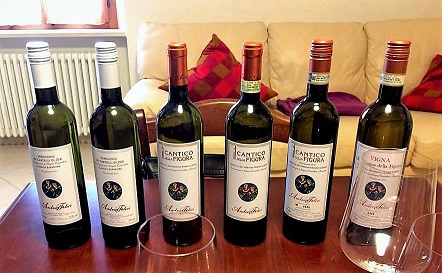Felici, a library of Verdicchio (2)

In the first part of our interview (published yesterday LINK), Leopardo Felici in a slightly polemic way called for changes to regulations governing the production of Verdcchio dei Castelli di Jesi including the creation of a quality pyramid that would allow producers to market their best wines at a higher price in order to then invest the proceeds in the vineyard and the winery.
DoctorWine: Your Superiore and Riserva Verdicchio seem less stuffy than in the past, while still remaining technically above board.
Leopardo Felici: Up until 2008 we used cryomaceration, which was perfect to exalt the varietal’s initial notes. Then with our enologist Aroldo Bellelli we changed and opted for fermenting with a small percentage of the skins.
DW: An old fashioned Verdicchio made using new technology.
LF: You could say that. In this way the wine does not get heavy in regard to color, aroma or flavor, while at the same time the grape’s territorial notes are exalted, the almond and anise sensations. Verdicchio’s aromas are only from the skin and eliminating them would be a contradiction if, as in our case, the principle aim is to express the varietal and the territory.
Our vertical tasting was in actual fact and reverse one of two wines: Verdicchio dei Castelli di Jesi Classico Superiore Andrea Felici and Castelli di Jesi Riserva Vigna Il Cantico della Figura. Both were fermented with a small percentage of the skins, the first for a brief time and the second for two weeks. The Classico Superiore is a cuvée of the estate’s vineyards that ages in stainless steel, while the Riserva is made with grapes from the estate’s best vineyard, San Francesco with its 50-year-old vines, and ages in cement vats.

 Italiano
Italiano













